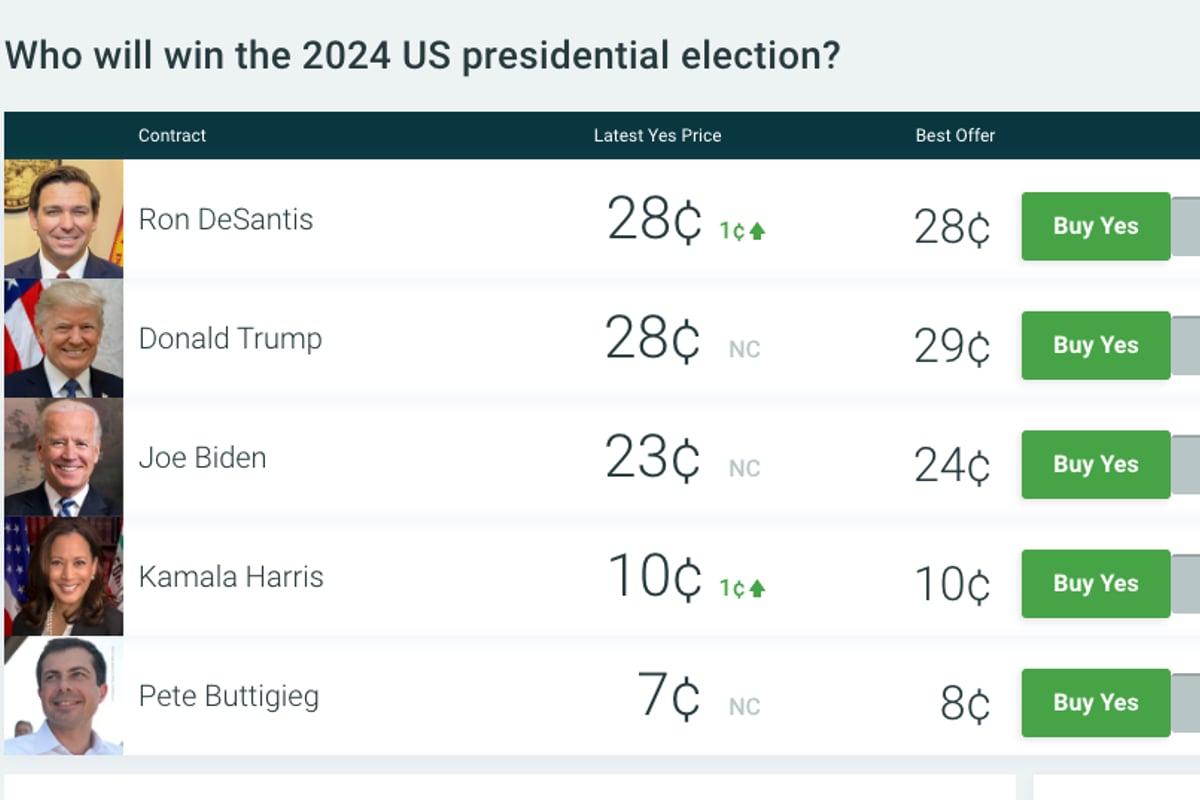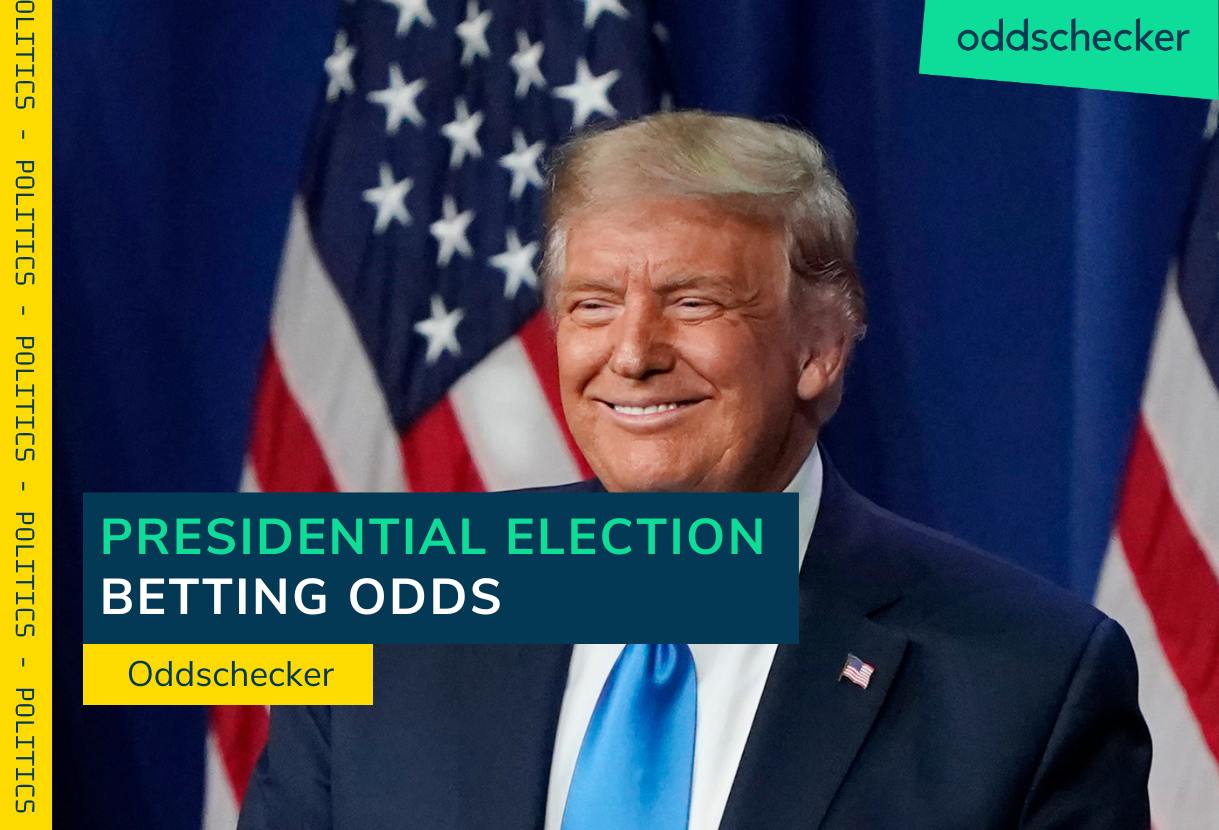Analyzing Odds For Presidential Election: What Influences Them?
Can anyone truly predict who will be the next President? Absolutely not, but understanding the shifting probabilities, the undercurrents of public sentiment, and the historical precedents offers a far more nuanced, and ultimately more accurate, perspective than simple guesswork. This question has resonated through countless elections, and while a definitive answer remains elusive, the factors shaping those probabilities are increasingly scrutable.
A cornerstone of any presidential election forecast is the economy. A thriving economy typically bolsters the incumbent's chances, as voters tend to favor continuity when their financial well-being feels secure. Conversely, a struggling economy often fuels the desire for change, leading voters to seek new leadership.
Beyond the economy, the candidates themselves wield considerable influence. Voters gravitate towards candidates they find relatable, trustworthy, and aligned with their values. Perceived competence, experience, and a clear articulation of policy proposals are also critical factors that sway voter decisions.
- Who Is Tim Scotts Daughter All About Jenn Scott Updated
- Vegamovies Download Guide To 300mb Movies 480p1080p Now
The media's role, the prevailing political climate, and even unforeseen events, such as natural disasters or international crises, can significantly impact election outcomes. A well-timed endorsement, a gaffe caught on camera, or a sudden shift in the national mood can all alter the trajectory of a campaign.
Despite the inherent unpredictability, strategic actions can improve a candidate's odds. A well-funded, meticulously organized campaign that effectively mobilizes voters is crucial. Clear messaging, consistent outreach, and a strong ground game can make the difference between victory and defeat.
- Helps predict the outcome of elections
- Provides insights into voter sentiment
- Can be used to make informed decisions about campaign strategy
The use of odds in predicting presidential elections has a long history. As early as the 18th century, British bookmakers were offering odds on the outcome of the American presidential election, demonstrating an early fascination with quantifying the probabilities of political outcomes.
- Who Is Connie Kline Young A Look At Her Career Policies
- Unlock The World Of 7 Star Hd Movies What Why And Where To Watch
In the United States, political campaigns began incorporating odds analysis in the early 19th century. A notable example is Andrew Jackson's 1824 campaign. Despite being considered a long shot, Jackson leveraged odds assessments to strategically allocate resources and ultimately secure victory.
The practice of using odds for presidential predictions has persisted and grown, particularly in recent years. The increasing availability of data and sophisticated analytical tools have made odds assessments a more prominent and influential factor in election coverage and campaign strategy.
- The economy
- The candidates
- The media
- The political climate
- The weather
- Political science
- Economics
- History
- Sociology
- Psychology
Presidential election odds are a vital element in the electoral ecosystem. They offer a window into voter sentiment and play a significant role in shaping campaign approaches.
- Economic indicators: The economy's health is a major determinant of voter preference.
- Candidate appeal: A candidate's perceived qualities influence voter decisions.
- Media coverage: Media narratives shape public opinion.
- Political climate: The atmosphere influences voter turnout and support.
- Historical trends: Past results provide a backdrop for current odds.
- Betting markets: Investor confidence impacts public perception.
- Polls and surveys: These snapshots shape media stories.
These aspects interact dynamically. A booming economy can bolster a candidate's appeal, while negative media can weaken it. Understanding these connections helps campaigns refine their strategies.
Economic indicators play a critical role in shaping presidential election odds. They offer insights into the financial health of a nation and its citizens, influencing how voters perceive the candidates' abilities to manage the economy.
- Employment rate: A low rate signals a healthy economy, potentially aiding the incumbent. High unemployment might favor challengers promising job growth.
- Inflation: Stable rates are preferred. High inflation can hurt voters' purchasing power, giving an edge to candidates proposing inflation control.
- Gross domestic product (GDP): GDP growth is a key economic indicator. Strong growth might improve the incumbent's chances.
- Consumer confidence: High confidence suggests economic optimism, which can translate to support for the incumbent or candidates focused on stability.
In essence, economic indicators are central to voters' assessments of candidates' economic competence and their potential to improve financial well-being.
Candidate appeal plays a pivotal role, with voters favoring those perceived as charismatic, relatable, and capable of delivering on promises.
- Charisma and likability: Charisma and interpersonal skills allow emotional connection. Authenticity and the ability to inspire trust are key.
- Policy positions: Alignment with policy positions influences support. Candidates should clearly communicate policies addressing concerns. Strong platforms addressing pressing issues resonate.
- Electability: A candidate's perceived ability to win is significant. Experience, name recognition, and fundraising influence electability perceptions.
- Leadership qualities: Voters want strong, decisive leaders. Strategic thinking and crisis management are key leadership qualities that enhance appeal.
Candidate appeal is multifaceted. By understanding its components, candidates can enhance their appeal and connect with voters.
Media coverage is crucial, shaping voter perceptions of candidates and issues and significantly influencing public image and favorability.
Positive coverage can boost a candidate, highlighting strengths, policies, and leadership. Conversely, negative coverage can damage reputation, focusing on weaknesses and controversies.
The media also shapes issue perceptions, influencing voter concerns and priorities. Emphasis on particular issues can elevate their importance in voters' minds.
Effectively managing media presence is vital. Those who do so successfully can improve their odds.
The prevailing political climate affects voter turnout and support, shaping the electoral landscape.
Polarization, with heightened divisions, can lower turnout as individuals become alienated. Apathy can also suppress turnout.
Political climate affects candidate support. In polarized settings, voters strongly align with ideologically similar candidates. Apathy can lower overall candidate support.
Campaigns must tailor strategies to address the climate's effects.
Historical trends in election results offer valuable insight. Analyzing past outcomes helps identify factors influencing elections.
- Electoral cycles: Political parties and ideologies experience cyclical patterns. Understanding these can anticipate shifts.
- Incumbent advantage: Incumbents have advantages in recognition, funding, and support. Data on incumbent success informs odds.
- Economic conditions: The economy influences behavior. Past elections assess the impact of indicators like unemployment.
- Demographic shifts: Changes like population growth affect turnout. Analyzing these identifies changes impacting odds.
Considering history assists campaigns in developing strategies and predicting outcomes.
Betting markets are unique, offering insight into investor sentiment. Odds reflect investor confidence in a candidate.
Higher confidence decreases odds, while lower confidence increases them. This dynamic influences public perception.
Betting markets can indicate election outcomes, providing early signals through aggregated predictions.
However, betting markets are fallible. They can be influenced by information availability and investor behavior. They should be considered with other indicators.
Polls and surveys shape odds by providing insight into sentiment.
Leading in polls can boost odds by creating a bandwagon effect. Trailing can lead to loss of momentum.
Polls influence media narratives, determining which candidates to cover. Positive results generate more favorable attention.
The connection is complex. Polls shape perception, but they are also influenced by methodology and timing.
This section answers common questions about odds for presidential.
Question 1: How accurate are odds for presidential?
Accuracy varies depending on data quality, methodology, and timing. While valuable, odds are not a perfect indicator.
Question 2: What factors influence odds for presidential?
Factors include economic conditions, candidate popularity, media coverage, historical trends, and betting markets. Analyzing these improves predictions.
In conclusion, odds offer insights, but interpret them with caution.
In conclusion, odds offer insight and are useful tool and it will continue to play significant role in elections.
- Unveiling Freddie Haynes Net Worth In 2024 Success Secrets
- Vegamovie 4k Is It The Best Streaming Service Find Out Now

Trump, DeSantis 2024 Betting Favorites, President Biden Numbers Slide

Trump Running Mate 2024 Odds Vitia Jillayne

Vegas Odds Presidential Race 2024 Joey Rosita